And in This Corner, weighing in at 154 grams...
The new Vodaphone Treo 750v has been announced, the specs have been released, it's packed with features, and it's available now. As carriers and mobile OEMs compete for the now red-hot smartphone market, which devices will be successful internationally? Which might be offered by US carriers as 3G services are deployed? Which would the brave consider for import? Who will be standing at the end of the cage match?
There was a glut of new phones revealed at CTIA and many smartphone heavyweights are out there. This article aims to discuss them in terms of comparison with the Treo 750v. Specifically, we're going to mostly look at specifications -- which phones have the real power? Needless to say, only 3G smartphones need apply. Oh, okay, I'll talk about Blackberries in the comparison too, since people seem to like them. I've narrowed the field down to a few high-end phones that have been catching a lot of gadget buzz lately:
- SE P990
- Nokia E61 & Nokia E62
- Blackberry Pearl
- Samsung SGH-i600
- HTC 3600 / TyTN
- Treo 750v
As a fair warning, this comparison is the reason that I wrote the GobbledyGook Demystified article. If the raft of acronyms to come in this article is unfamiliar, I suggest you check that one out first.
Sony Ericsson P990
Our phones go up to 11 8!
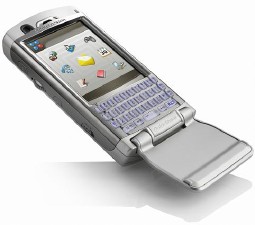
For starters, there's a lot of buzz about the Sony Ericsson P990i. Many reviewers (including Steve Jobs) raved about its two-year-old predecessor, the P900. How does the updated model stack up? Its feature list includes dual-band UMTS for 3G networks outside the US, a 240x320 touchscreen, and a phone dial pad that flips down to reveal a qwerty-style keyboard. Other on-board goodies include stereo bluetooth, built-in Wi-Fi, and FM radio with RDS.
Its largest downside is that it's only tri-band GSM. Which means that while one of the American frequency bands is present (1900 mHz), the other isn't (850 mHz). T-Mobile folks would be fine until they started roaming; mixed-network folks (i.e. Cingular customers) would likely have an unpleasant experience altogether. Also, there's no support for American 3G and no EDGE support for reasonably fast internet -- your P990 will revert to pokey GPRS outside of Europe and Asia. The P990 comes so close and yet falls so far.
Another nice smartphone of theirs, the M600i, has the same fundamental problem. Supposedly, phone makers intend that 'i' to stand for international, though you'd never know it.
Nokia Competes Well in the Smartphone Market
but only in Europe
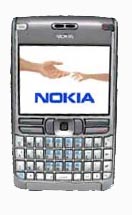
The Nokia E61 is up next, and its feature list is perhaps even more impressive than the SE P990: Symbian 9.1-based Series 60 OS, quad-band GSM, GPRS, EDGE, Bluetooth v1.2, Wi-Fi, and UMTS for Europe and Asian bands. D'oh! The E61 also lacks a camera or a touch screen, though the screen itself is nice at 320x240 landscape. The specs are impressive and the phone is a very strong first foot forward for Nokia in the smartphone market. The phone doesn't look bad at all, but it's definitely not made for the US. Thankfully, Nokia is releasing an update to it for the US and adding 1 to the model number!
Houston, We Have A Branding Problem
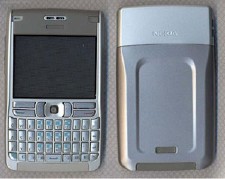
*Sigh*. Nokia is cutting the parts that make the E61 a desirable device and releasing it to the US as the E62. If you hate 3G, Nokia has removed it for you lest it tempt you. That doesn't really matter, since there's still Wi-Fi... *sigh again*. Just kidding, they removed that too. The E62 also lacks the same thing that the E61's touchscreen and camera. Unlike the other phones on this list, the E62 is slated for North American release via Cingular on Sept. 29th. The price on this one is expected to be $150, though I'm unaware of the scope of heinous contract and rebate terms that price implies.
Although I'm excited to see a Symbian smartphone brought to the US, the excitement doesn't carry over to this phone. Let me know in the event that your workplace makes you use it. In any case, look for this tag team of phones to tap out.
A Blackberry By Any Other Name is Still Just a Blackberry
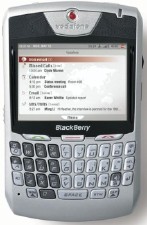
Blackberries fit in a funny sort of market niche. They're not exactly smartphones -- no touchscreen, no applications based OS. For example, the Blackberry folks are all excited about the Blackberry Pearl (aka 8100), which... wait for it... has a camera and... hold your applause until the end, everyone... does multimedia. No 3G, no swapping memory cards without removing the battery, no replacing your MP3 player. The Pearl will certainly do well, but its feature set highlights my main issue with Blackberries: there is no way to extend the phone's limited operating system through 3rd party software, like one can on Symbian, Palm OS, or Windows Mobile. Java J2ME or BREW application support doesn't make them smartphones. Since pretty much every smartphone comes with direct push email support nowadays, it's hard to see where the Blackberry advantage lies anymore. With Palm OS or Windows Mobile, one could add multimedia support through software like PocketTunes, RealPlayer, and I could go on, but the list is long.
Blackberry's competition for the 750v, spec-wise, is the 8707 series of phones, which have been released to Germany, Singapore and regions of the former British Empire. This model lacks various features like software upgradeability to HSDPA, memory expansion slots, and the ability to edit Office documents. I should also say that with no memory expansion slot, it will never replace your MP3 player. There's no camera, so videophone calls are out as well.
So close, and yet so far
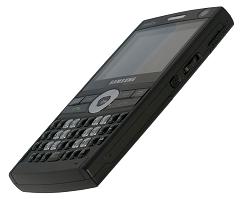
The Samsung SGH-i600 looks to be the first real contender of this group. Like the Treo 750v, it runs Windows Mobile 5.0, has BT, a 1.3MP camera (with a 2nd for VGA calls), push mail, quad-band GSM, GPRS, EDGE, tri-band UMTS (and HSDPA for the 3.5G goodness!). It also includes built in Wi-Fi (802.11b/g). The display is a 2.3" and 320x240, though no touchscreen. It's already FCC approved and expected in Q4 of 2006. Samsung also apparently did quite a bit of work making the phone one-handed and included a scroll wheel on the phone. The SGH-i600 looks like it might be a very nice phone. It will probably be the leader of the pack of Smartphone Edition phones, but it loses points for being Smartphone Edition: no ability to edit office documents, and no touchscreen.
The Kitchen Sink!
No... Two Kitchen Sinks!!!!!!!!
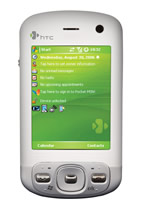
The only phones that I can find that exceeds the 750v in terms of specs that have been released are from HTC. Specifically, the 3600 Trinity. Like the 750v, it's quad-band GSM and has EDGE for faster data. It also has dual-band UMTS and HSDPA. When released, it will have Bluetooth v2.0, a 2 megapixel camera, a 2nd camera for video calls, and built-in Wi-Fi. It doesn't have a keyboard, which may annoy qwerty fans. If this is picked up by carriers, it will be strong competition for the Treo. Both Palm and Windows claim Bluetooth 2.0 is unsupported by Windows Mobile 05, so it will be interesting to see how the conflicting information sorts itself out once this phone hits the streets.
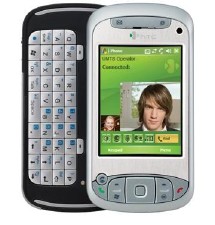
There are other high-end devices from HTC that are worth mentioning -- specifically, the HTC TyTN has specs similar to the 3600 and has a slider keyboard that goes the "long way" of the device. It's also fascinating to me that HTC is the company that builds most of the Treos for Palm.
The Treo 750v
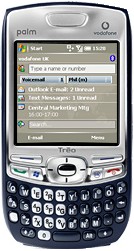
The Treo 750v compares well to the phones previously mentioned. It has support for 3G internet on GSM no matter where you are in the world, putting it a step ahead of the Nokias and Sony Ericssons. It stands on fairly level ground with the upcoming Windows Mobile devices. So where does it fall short?
- The 240x240 screen isn't quite as large as some of the other devices with 320x240 screens
- The Treo 750v lacks Wi-Fi, which matters quite a bit in Europe where most people are stuck with per-megabyte download charges instead of flat-rate unlimited data plans. Though this can be remedied with a Wi-Fi card, it's still a feature that other phones on this list have that the Treo 750v lacks. The Palm spokesperson from CTIA mentioned battery life as a concern for Wi-Fi; it will be very interesing to see how the 750v stacks up in that regard. No Wi-Fi also means that it will probably never show up on T-Mobile.
- No 2nd camera for video calls; supposed to be one of the defining features of 3G services
- the short-term competitive advantage of "Palm's Special Sauce" -- their integration of software and hardware. The problem - this competitive advantage can always be lost with a competitor's firmware update.
Competition Makes Things Better
So which smartphone comes out on top? Treo 750v should be able to slug it out with the HTC phones admirably, should they become available on carriers. With the other phones, it's probably a knockout.
The 750v, though smaller than previous Treos by a smidge, is still a rather large phone. A lot of the competing devices are slimmer and sleeker than the 750. Thin phones are in, though they tend to lack the feature sets of fuller smartphones. Both Blackberry and Palm have done quite will with thicker devices that feel good in a person's hand. A slim phone doesn't do anyone any good if they have to slap a fat extended battery on it to make the phone last the day. That said, if Microsoft adds the ability to edit Office documents to WM Smartphone Edition and the battery life issue gets fixed, the touchscreen of the 750v may not be enough to differentiate it from its skinnier competitors.
Though Palm has stayed mum on U.S. availability of the 750, they are apparently planning for it. Their engineers did, at any rate -- it supports quad band GSM and the U.S. bands of HSDPA, which Cingular calls "BroadbandConnect." I don't think there's any cause for worry; Palm has been doing smartphones as long as anyone. If they can do 5 phones this year, who knows what they'll be coming out with next year?
Discuss this article in forums.